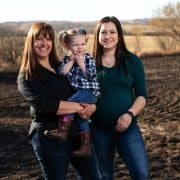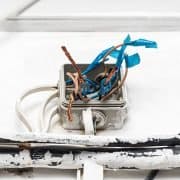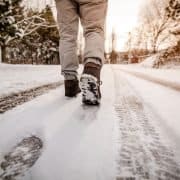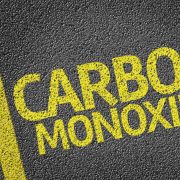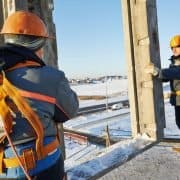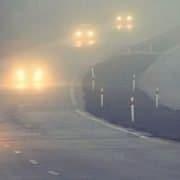Archive for year: 2018
Turning girls into farmers
/in Agronomy, Grain Marketing, Young Farmers/by Ryan MortierShould you raise daughters differently to succeed at farming? This mother, daughter and granddaughter know their answer
No matter how progressive we think agriculture is becoming for ourselves, for our wives and for our daughters, there’s still a prevalent attitude that farming is “men’s work.”
Now a new ethos is gaining ground, and anyone who subscribes to the men’s-work way of thinking is being asked — well, ordered really — to get over themselves.
Farming excellence, we’re told, is no longer predicated on the farmer’s muscle strength. Instead, success takes multi-tasking, management, problem solving — areas where women excel at least as often as men.
With the demands ahead, our industry’s priority should be attracting the best and brightest of the next generation, regardless of gender. How can we do that? To find out, Country Guide sent me to talk to the experts: three generations of women from one farm family, all of whom identify solidly as “farmer.” Here is what I learned. — M.B.
Bev Shewchuk can pinpoint the exact moment she realized she’d had enough of not being taken seriously as a farmer. She and husband, Brad, had gone into the local bank to talk financing. Even though she carried the majority of the farm management including all of the day-to-day operating of the farm while he worked away, she waited until he was home from the oil field to make the trip into town since they always did the major farm decision-making together.
When the financing officer handed the couple their completed paperwork, Brad’s occupation was described as “farmer.”
Shewchuk, despite the fact that the couple had clearly described the partnership of their operation, was listed as “housewife.”
“Even though I was 100 per cent engrossed in the farm,” she says, “and even though I made all the decisions with the cattle and sheep, and even though I did every bit of the work when Brad was away, I was still a farmer’s wife even in my own mind until that moment.
“That was my turning point, the moment when I really changed my attitude about my own role on the farm.” Read more
Safety: Climbing ladders safely
/in Agronomy, Grain Marketing, Safety/by Ryan MortierNot maintaining three points of contact when climbing ladders can lead to injuries. Three points of contact is defined as always having one foot and two hands, or one hand and two feet in contact with the ladder at all times.
While maintaining three points of contact is important, maintaining three points of control is critical. Three points of control involves a worker using three of their four limbs for reliable, stable support while climbing a ladder.
Climbing a ladder with a tool in your hands can maintain contact with the ladder but not a firm grip (control) on the ladder rung. Communicate and practice three-point control. It provides for a greater level of safety when climbing ladders.
Other ladder-related best practices include:
- Inspecting the ladder prior to climbing.
- Facing the ladder at all times.
- Hoisting tools rather than carrying them.
- Keeping the belt buckle between the rails of the ladder.
Safety first in everything you do – on and off the farm.
REMEMBER TO ALWAYS:
Get proper rest. Look after yourself. Slow down. Never take shortcuts.
Work safe. Farm safe. Home safe.™
Safety: Common electrical hazards
/in Agronomy, Grain Marketing, Safety/by Ryan MortierTake a moment today to think about electrical hazards and how you can make your operation safe for you, your family, workers and visitors.
There are several things you can do at home, in the barn, and workshops to help eliminate the chances of shocks, electrocution and fires.
Missing covers
Missing covers on junction boxes, switches and outlets expose energized circuits, creating arc flash, shock, and electrocution hazards. In addition, missing covers provide a path of entry into the interior of the enclosure, allowing dust, dirt, and debris to accumulate. Missing covers could allow metallic objects to fall into the circuits that could arc or lodge in a way that presents a hazard when the enclosure is opened.
Broken/unsupported light fixtures
Light fixtures should be permanently mounted to the base and show no signs of damage. Light fixtures that are hanging unsupported by wiring, puts undue stress on the electrical connections. These two conditions present the potential for an electrical short, which can produce sparks that can ignite combustibles leading to a fire.
Circuit breakers
All electrical breaker panels should be equipped with an appropriate cover and remain closed. Missing covers expose the circuits to dust and physical damage. If an arc or short circuit would occur, the cover will contain the sparks from igniting surrounding combustibles.
There should not be any missing breakers or other openings between breakers. These openings allow for the potential for electrocution, physical damage, and dust and dirt to accumulate in the circuits. Spare clips should be installed in any openings in the breaker panel.
Breakers must never be taped or physically secured in the “ON” position. If the breaker is not allowed to trip, or cannot be manually tripped, the wiring could overheat, increasing the chances of a fire.
The electrical panel should be indexed, identifying each individual circuit breaker.
Housekeeping
Electrical equipment can and does fail, often catastrophically, with arcing that produces large amounts of heat. Any combustible material in the vicinity of the arc flash can be ignited.
Access to electrical rooms should be limited to authorized maintenance or operations personnel that understand the importance of maintaining a clean, well-ventilated electrical area.
Electrical equipment areas should be kept dry and equipment needs to be protected from moisture. When evidence of moisture contamination is noted, equipment should be examined for damage and necessary repairs made. The source of the moisture needs to be identified and eliminated.
Electrical equipment areas should be clean and protected from dust and dirt. Placing storage items too close to electrical panels or near electrical equipment will restrict air circulation and impede proper cooling. Excessive heat buildup will result in premature failure and shortened service life.
Work safe. Farm safe. Home safe.™
™ is a trademark of Thompsons Limited.
Safety: Slips, trips and falls – winter safety tips
/in Agronomy, Grain Marketing, Safety/by Ryan MortierLet’s look at walking outside when it’s cold and snowy or icy.
Here are some winter safety tips to help prevent slips and falls:
- Plan ahead and give yourself sufficient time.
- When walking on steps, always use the hand railings and plant your feet firmly on each step.
- Bending your knees a little and taking slower and shorter steps increases traction and can greatly reduce your chances of falling.
- Streets and sidewalks that have been cleared of snow and ice should still be approached with caution. Look out for “black ice.” Dew, fog or water vapour can freeze on cold surfaces and form an extra-thin, nearly invisible layer of ice that can look like a wet spot on the pavement.
- Carrying heavy items can challenge your sense of balance. Try not to carry too much–you need to leave your hands and arms free to better balance yourself.
- Be prepared to fall and try to avoid using your arms to break your fall. If you fall backwards, make a conscious effort to tuck your chin so your head doesn’t strike the ground with a full force.
- When entering a building, remove as much snow and water from your boots as you can. Take notice that floors and stairs may be wet and slippery–walk carefully.
- Use special care when entering and exiting vehicles–use the vehicle for support.
Work safe. Farm safe. Home safe.™
™ is a registered trademark of Thompsons Limited.
Winner of Thompsons #WelcometoBrevant Twitter contest
/in Agronomy, Announcements, Video/by Ryan MortierSafety: The dangers of carbon monoxide
/in Agronomy, Grain Marketing, Safety/by Ryan MortierCarbon monoxide (CO) is a poisonous, odorless, and tasteless gas. CO results from the incomplete burning of natural gas and any other material containing carbon such as gasoline, kerosene, oil, propane, coal, wood, etc. Examples of carbon monoxide sources include portable generators, concrete cutting saws, space heaters, welding, and gasoline powered equipment. Smoldering grain can also produce carbon monoxide.
Health effects
Carbon monoxide is hazardous to persons inside of confined spaces or poorly ventilated areas. When carbon monoxide is inhaled, it displaces oxygen in the blood depriving the heart, brain, and other vital organs of the oxygen the body needs. Large amounts of carbon monoxide can kill a person in minutes without warning, causing them to lose consciousness and suffocate. Read more
Safety: Preparing for winter work
/in Agronomy, Grain Marketing, Safety, Weather/by Ryan MortierWorking outside in the winter can be a dirty job, but many of us have to do it.
Are you ready for winter work?
Here are some reminders about dressing for the weather and staying strong, healthy and safe:
- Two big concerns of working or simply spending time outdoors in cold weather are frostbite and hypothermia. Hypothermia is a potentially fatal condition caused by loss of body temperature, even in winter conditions people might not consider particularly nasty. Symptoms include fatigue, nausea, confusion, light-headedness and profuse sweating.
- Wear the right gloves for the work you are doing. Gloves should have enough insulation to keep you warm and prevent frostbite, but be thin enough so you can feel what you are doing if you are manipulating controls or tools. Gloves which are too thick can also make your hands and wrists work too hard trying to hold on to objects, causing repetitive strain injury.
- Dress in layers of light-weight clothing which keep you warmer than a single layer of heavy clothes. Remove layers as necessary to prevent overheating and perspiring which can lead to chills or hypothermia later. Protect your ears from frostbite as well by wearing a hat that will cover your ears, or use ear muffs.
- Keep your safety eyewear from fogging up in the cold. Investigate anti-fog coatings and wipes to see if these products are appropriate for your eyewear.
- Your shoes or boots should have adequate tread to prevent slips and falls on wet or icy surfaces. Slow down when walking across slippery surfaces and be especially careful on ladders, platforms and stairways.
- Get plenty of rest. Working in the cold and even traveling to and from work in the winter takes lots of energy. Cold weather can strain your heart, even if you aren’t overexerting yourself, so be sure to pace yourself when lifting heavy objects or shovelling snow.
Work safe. Farm safe. Home safe.™
Safety: Driving tips for late fall and early winter
/in Safety, Weather/by Ryan MortierThe late fall or early winter season brings an increase in seasonal dangers that you should be aware of. Road and driving conditions change with the onset of time changes and late fall and early winter weather changes. Read more
To be leaders in the food and agribusiness sector through sustainability, integrity, relationships, employee engagement, profitability and innovation.



